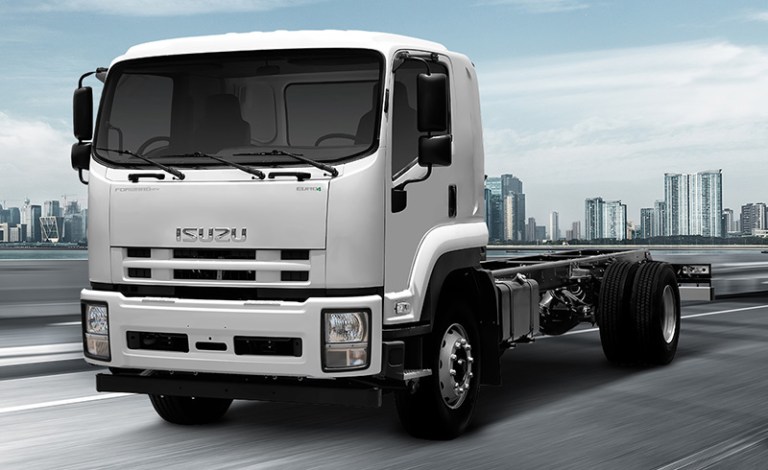Modern pickup trucks are outfitted with various safety features that go above and beyond the fundamentals, like seatbelts and airbags, because road safety is now paramount. Understanding the safety elements that every modern truck ought to have is essential whether you’re a truck driver or a fleet manager. In this essay, we’ll examine the crucial safety measures that have been made standards in the trucking sector to guarantee everyone on the road has a safer trip.
- Advanced Driver Assistance Systems
Modern vehicles have advanced innovations that assist drivers in keeping a safe distance from other cars, staying in their lanes, and preventing collisions. The cornerstone of 10 ton pickup truck safety, ADAS helps prevent accidents and saves lives.
- Electronic Stability Control
In difficult driving situations, electronic stability control is a crucial safety component that aids in preventing rollovers and loss of control. It automatically modifies engine power and applies individual wheel brakes as necessary to keep the truck stable. ESC is especially important for large loads being transported by heavy trucks.
- Anti-lock Braking System
Since many years ago, ABS has been a required safety component and is still essential today. In order to maintain steering control during strong braking, ABS avoids wheel locking. Large trucks that need longer stopping distances will especially benefit from this feature.
- Collision Mitigation Systems
Systems for preventing collisions are created to identify impending collisions and take action to lessen or completely avoid them. These systems frequently have automatic emergency braking, which can save lives when a driver’s reaction time is insufficient to prevent a collision.
- Rear-View Cameras and Sensors
Improved visibility is essential for large trucks, especially when turning or reversing in constrained places. Drivers can see clearly behind the truck thanks to rear-view cameras and sensors, which lowers the danger of accidents, especially in crowded cities.
- Tire Pressure Monitoring Systems
The tires must be inflated properly for diesel trucks to operate safely and efficiently. Tire pressure is continuously monitored by TPMS, which notifies the driver if there is a considerable departure from the recommended range. It aids in reducing blowouts and maximizing fuel efficiency.
- Roll Stability Control
Rollovers, which may be disastrous for large, 10-ton pickup trucks, are something that Roll Stability Control is intended to avoid. RSC can intervene to correct imbalances and keep the truck upright by keeping an eye on the truck’s stability and load distribution.
- Automatic Transmission with Engine Retarder
The effectiveness of the brakes and the amount of wear on the braking system can be considerably improved by an automatic transmission with an engine retarder. Diesel trucks can use this function to navigate steep downhill hills, where retaining control is essential.
- Driver Monitoring Systems
In the trucking sector, driver attention and exhaustion are major safety concerns. Cameras and sensors are used by driver monitoring systems to monitor the driver’s behaviour level of attention. The system can issue warnings or even take action to avert accidents if it notices signs of sleepiness or attention.
- Telematics and Fleet Management
Telematics and fleet management systems are crucial instruments for preserving pickup truck safety even though they are not physical safety features. These systems give fleet management up-to-the-minute information on vehicle performance and driver behaviour maintenance requirements, enabling them to handle problems proactively and guarantee the security of their drivers and cargo.
- Emergency Braking Assistance
The effiEmergency braking assistance devices improve the efficiency of a driver’s emergency braking operations, shorten stopping distances in emergency brake pr, and ensure, as necessary, assist drivers in avoiding incidents or lessening their severity.
- Lane Keeping Assist
Truck drivers can decrease the danger of unintentional lane departures by using lane-keeping to help them stay in their lanes. When the system notices drifting, it gently steers the vehicle or notifies the driver, encouraging safer highway driving.
- Adaptive Headlights
The truAdaptive headlights change their direction and intensity. The safety of nighttime driving is increased by this dynamic illumination, which increases visibility and lessens glare for approaching drivers.
- Pedestrian Detection and Protection
Using cameras Usingors to detect pedestrians or bicycles close to the truck, pedestrian detection systems can start braking or steering interventions to avoid accidents. For delivery in crowded urban locations, this capability is extremely important.
- Side-Impact Airbags
Modern trucks may have side-impact airbags in addition to the normal front airbags. These airbags offer additional protection in the case of a side collision, lowering the risk of injury to the driver and passengers.
- Fire Suppression Systems
In the event of a fuel or engine compartment fire, fire suppression systems, though not always present in trucks, can be incredibly helpful in averting catastrophic fires. These devices can swiftly put out fires, lowering the possibility of a harmful explosion.
Modern trucks come with an extensive selection of safety features that put the safety of both drivers and the general public first. These elements, which range from advanced driver systems to stability control and tire pressure monitoring, work together to make roadways safer and reduce accidents. Remaining up-to-date with this crucial safety technology is recommended and a must for everyone working in the trucking business as it continues to develop.







